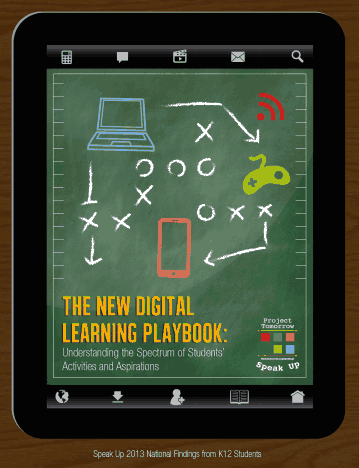The video Digital Media: New Learners of the 21st Century on PBS provides insight to the practicality and importance of technology and media in education. The video has me excited to use technology in my future classroom. Using digital tools can help children find something they’re passionate about. Children need to have a passion for something. Often, the activities children are passionate about are outside of school such as playing sports, playing video games, spending time on social media, participating in clubs, etc. Using digital devices in the classroom allows for children to find things they’re passionate about inside school. Children will be more excited to learn. Learning doesn’t become a burden when children are learning through a tool that excites them. The digital tool doesn’t even always have to be that exciting, it’s the program, game, or project on the media device that makes learning fun, exciting, and engaging. Additionally, digital media learning can motivate children to put more effort into their work. If there is potential for work to be shown to more people than just the teacher because it’s online or available to others, children may work harder on the project or assignment. The use of technology in the classroom is a tool to help children learn in new ways. Children no longer just need to know information; they need to know how to be innovated and think critically, which many technological tools facilitate.
My favorite learning program is the Smithsonian Institute program in Washington, D.C. So many children think museums are boring. They only enjoy going on field trips to museums because it’s day away from the classroom. I was definitely one of those children. I loved having a day to mix up the daily routine at school, but I could have cared less what was inside the museum we were visiting. Youth in the Smithsonian program are creating scavenger hunt games for teenagers to play at the museum. The scavenger hunts send text message clues to cell phones. The teenagers playing are then forced to pay more attention and look more closely at the museum. They then aren’t just walking through the museum mindlessly. The players have to take a picture when they find what they’re looking for. A game like this on a phone would make any trip to a museum more interesting, especially to a teenager. It’s another opportunity for those teenage girls to take a perfect selfie with the objects they were looking for. The scavenger hunt allows for players to actively participate at the museum and learn so much more than if they just walked through passively.
As I learned more about digital media learning, I realized that traditional forms of literacy are still very much used. At the Smithsonian Institute program, children have to go through many traditional literacy steps before the scavenger hunt is put into the cell phone program. The children must work together to create a story line and questions to use throughout the scavenger hunt. It must be creative and suspenseful to entertain the players, but also concise because it’s displayed through a text message. It also must be well written. The children creating the scavenger hunts need to have good writing and editing skills in order to write good story line and questions. I had not thought about how traditional literacy skills would still be needed while creating a project with technology. Turns out, most projects must have lots of preparation with traditional forms of literacy before using the technology, like with videos, music, or podcasts. I think many people are like me and don’t realize this, which may be why some people haven’t jumped on the educational technology bandwagon yet.
The video has opened my eyes some of the numerous ways technology can be used in the classroom. I’m motivated to be an innovative teacher, looking for new ways for my students to work with technology to create work they can be passionate about and proud of. I hope my students enjoy learning more because of the technology and freedom it allows. I hope the experiences of working on projects with technology help my students learn to think creatively and critically, which is what education is all about anyway.




